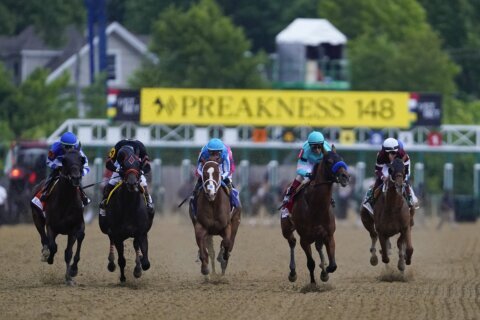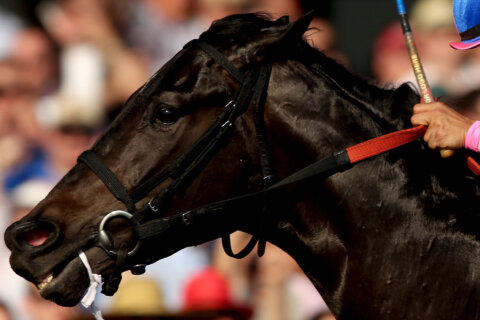Several states around the country will allow college athletes to start profiting off their names, images, and likenesses (NIL) in ways that have previously been prohibited by the NCAA. State laws in places like Florida, Georgia and more than a dozen other states (many of them with big time college athletic programs) all take effect on July 1.
College athletes in Maryland will be able to profit off their NIL in 2023.
But simply giving an athlete the right to monetize their own brand doesn’t automatically mean they’ll be able to do so. In some cases, their personal social media accounts will make it easier to reach that big audience, and in other cases it might be a detriment.
Currently, professional and college teams have a whole staff working behind the scenes, studying “lots of really complex analytics,” said Tammy Clegg, an associate professor at the University of Maryland’s College of Information Studies. “Then they have these deep understandings of how to tell stories and how to do the things that will actually maximize the impact of social media marketing and helping athletes to establish their brand.”
“A media team is going to be doing extensive analytics every time they put out a post,” said Clegg. “They’re collecting lots and lots of data about what times of reactions … what times of hits and things like that they’re getting so they can maximize the effect of the posts that they’re making.”
Some athletes will be more engaging and capable of sharing a story naturally and authentically better than their teammates. But even then, a lot of behind the scenes stuff involved in that branding stays behind the scenes even to the athletes who are involved in the social media content produced by the schools they’re playing for.
“There’s a lot of ways that the university helps the athletes with that now when it’s for the university,” she said. “They already have extensive media support. They have media specialists on each team that travel with the team and help them to interact and develop some of these skills. But they often are shielded from some of the more technical aspects that they’re going to now need if they want to manage their own social media brand.”
Those assets, not to mention sophisticated cameras and other equipment, as well as someone who has plotted out a storyline already may not always be available to players. That’ll be especially true in those moments that are bound to occur when a team’s branding and goal might not always align with the image that a particular athlete is trying to promote.
Clegg said athletes will need to understand this is one more responsibility that will primarily be foisted upon them.
“They already have full time jobs — they already have really two full time jobs,” said Clegg. “Their academics and their sports by itself, so it’s a lot. I think they’re going to be well poised to take advantage of it, but we’re going to really have to understand how to help them do that.”
But what about athletes on teams that carry lower profiles? The audiences built in to big time football and basketball programs and the athletes who play on them will naturally give them an edge in building an audience. But Clegg said there are advantages for athletes on what are considered “non-revenue” generating teams.
“It’s going to be easier and harder in some ways,” Clegg said. “Easier in the sense that they’ll have more room to sort of experiment and try things out and get it wrong and then perfect it, right? Whereas an athlete who is on one of the high profile or high revenue generating teams probably won’t have those opportunities. As soon as they share something, they’re going to have a wide viewing audience.”
“That can be advantageous, because you have the numbers,” Clegg said. “But if you’re still developing that skill to understand ‘what do I want to share, how do I share it, what are the analytics behind it, how do I maximize it?’ — then I think that’s going to be more challenging that you’re going to have to do that in the public eye.”








